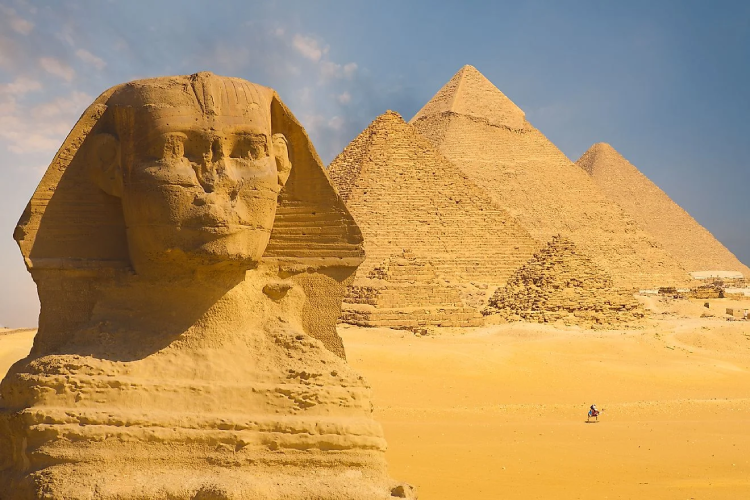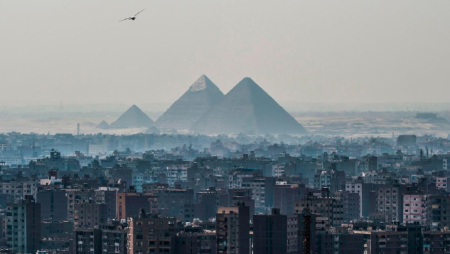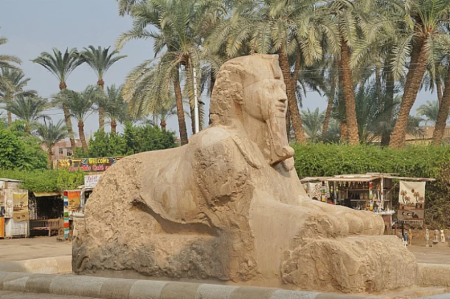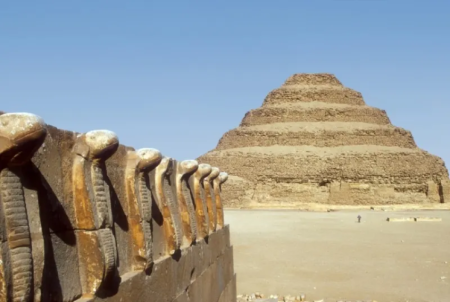the Great Pyramids of Giza

The Great Pyramids of Giza: Egypt’s Eternal Marvels of Human Ingenuity
Majestic, mystical, and monumental—the Great Pyramids of Giza stand as timeless sentinels on Egypt’s golden sands, echoing stories of pharaohs, gods, and the boundless determination of humankind. Rising from the edge of the Sahara, these ancient wonders have captivated scholars, travelers, and dreamers for millennia. More than just immense tombs, the Great Pyramids symbolize the zenith of ancient Egyptian civilization, its architectural genius, and its spiritual devotion to eternity. Every block of limestone tells a tale of precision, purpose, and unparalleled ambition. From the grandeur of the Pyramid of Khufu to the mystique of the Sphinx that guards them, this complex near Giza City continues to fascinate both historians and casual visitors alike.
For those planning Egypt Travel Packages, the Pyramids of Giza remain the crown jewel—an experience that blends adventure, awe, and a tangible connection to the ancient world. Over 4,500 years old, these structures have withstood the ravages of time, sand, and even modern pollution, preserving the essence of ancient Egypt’s golden age. To stand before them is to witness the ultimate triumph of human imagination over physical limitation. Let's dive deep into the history, design, and enduring legacy of these magnificent creations that continue to define Egypt’s identity and global allure.
The Historical Legacy of the Great Pyramids of Giza
The Great Pyramids of Giza were built during Egypt’s Old Kingdom, specifically the Fourth Dynasty, around 2600 to 2500 BCE. Their construction marked a turning point in architectural evolution and royal ideology. The Great Pyramid of Khufu (Cheops), the oldest and largest, was followed by the slightly smaller Pyramid of Khafre and the more modest Pyramid of Menkaure. Together, they form the Giza Plateau complex, a sacred necropolis that also includes temples, causeways, and the Sphinx Statue.
Each pyramid was designed as a stairway to the heavens—a literal and spiritual bridge between the world of men and the realm of gods. These monumental tombs were not only meant to preserve royal remains but also to ensure the pharaoh’s eternal ascension and divine protection. The precision of their alignments with the stars, particularly Orion’s Belt, reveals the Egyptians’ deep astronomical knowledge and symbolic mastery of cosmic order, known as “Maat.”
The Engineering Genius Behind the Great Pyramids
The construction of the Great Pyramids remains one of the most remarkable engineering feats in human history. Thousands of laborers—skilled artisans, masons, and workers—collaborated under strict organization, carving and transporting millions of limestone and granite blocks. Modern estimates suggest that over two million stones were used for the Great Pyramid alone, each weighing between two to eighty tons.
Contrary to popular myth, these builders were not slaves but well-fed, compensated workers residing in organized settlements. Archaeological discoveries near the site confirm the existence of bakeries, breweries, and medical facilities for pyramid workers. Their dedication turned an ambitious royal dream into a lasting reality that continues to baffle scientists today. Visitors can explore nearby sites like the The Grand Egyptian Museum to witness relics and tools used during the pyramid’s construction.
The Symbolism and Purpose of the Pyramids
Beyond their architectural splendor, the Great Pyramids of Giza represent the profound Egyptian belief in the afterlife. The pyramid’s shape symbolized the sun’s rays descending from the heavens, guiding the pharaoh’s soul upward to join Ra, the sun god. The internal chambers and passageways were intricately designed to protect sacred relics and royal mummies, aligning with spiritual geometry and cosmic balance.
Hieroglyphic inscriptions discovered in burial chambers reinforce the notion of immortality and divine rebirth. These spiritual texts, often referred to as the Pyramid Texts, are among the oldest religious writings known, laying the foundation for later funerary practices seen in the The Valley of the Kings and other royal tombs.
The Great Pyramid of Khufu: The Last Standing Wonder
The Great Pyramid of Khufu, known also as the Pyramid of Cheops, was the tallest man-made structure in the world for over 3,800 years. Originally standing at 146.6 meters (481 feet), its precision and scale remain unmatched. The internal design features the King’s Chamber, Queen’s Chamber, and the enigmatic Grand Gallery—a masterpiece of ancient engineering.
Modern measurements reveal that the base of Khufu’s pyramid is nearly a perfect square, with a margin of error less than two inches. Such accuracy, achieved without modern instruments, continues to astound researchers. Exploring the site during Cairo Day Tours offers a thrilling glimpse into this architectural marvel’s grandeur and mystery.
The Sphinx: Guardian of the Plateau
Carved from a single limestone ridge, the Great Sphinx stands before the Pyramid of Khafre, embodying strength and wisdom. With the body of a lion and the face of a pharaoh, possibly Khafre himself, the Sphinx guards the necropolis, symbolizing royal power and divine might. Despite centuries of erosion and damage, it remains one of Egypt’s most photographed icons, inspiring countless myths about hidden chambers and unexplained energies beneath the plateau.
Modern Discoveries and Ongoing Research
Even after thousands of years, the Great Pyramids of Giza continue to reveal secrets. Archaeologists employing advanced technologies like ground-penetrating radar and infrared thermography have detected hidden voids, tunnels, and chambers within the structures. One of the most exciting recent findings, known as the “Big Void,” lies above the Grand Gallery, its purpose still debated among Egyptologists.
These discoveries fuel renewed global fascination and underscore Egypt’s ongoing efforts to preserve its heritage through initiatives like the The Valley Temple restoration projects and digital documentation of ancient structures. Research into pyramid construction techniques continues to inspire modern architectural innovation and sustainability concepts.
Visiting the Great Pyramids Today
Touring the Great Pyramids of Giza is a transformative experience. Travelers from across the world flock to marvel at their enormity and aura. Whether arriving via Egypt Nile Cruises or local flights, the journey to this UNESCO World Heritage Site promises unforgettable moments. Camel rides across the desert plateau, dramatic sunsets over the pyramids, and the evening Sound and Light Show bring history to life with cinematic flair.
Nearby attractions such as the Sakkara Necropolis and Dahshour offer insight into earlier pyramid designs, tracing the evolution of ancient Egyptian architecture from stepped to smooth-sided structures. Combined with visits to Memphis Egypt, the old Egyptian capital, travelers gain a holistic understanding of ancient Egypt’s grandeur.
The Cultural and Global Impact of the Great Pyramids
The Great Pyramids of Giza have transcended time and geography to become universal symbols of endurance, creativity, and human aspiration. Artists, scientists, and philosophers have drawn inspiration from their geometry and alignment. From the Renaissance to the Space Age, the pyramids have influenced everything from art and architecture to engineering and literature.
Recognized as one of the Seven Wonders of the Ancient World and the only one still standing, they continue to represent Egypt’s national pride and cultural identity. Their presence fuels tourism and education while reminding humanity of our shared history and capacity for greatness.
Preserving Egypt’s Eternal Heritage
Egypt’s government and international organizations are continually working to preserve the Great Pyramids for future generations. Conservation programs tackle erosion, urban encroachment, and pollution threats. Educational initiatives encourage sustainable tourism, inviting visitors to engage respectfully with these priceless monuments. Through targeted projects and cultural collaborations, Egypt ensures that the pyramids remain not just monuments of the past but beacons for the future.
Frequently Asked Questions About the Great Pyramids of Giza
1. Who built the Great Pyramids of Giza?
The Great Pyramids were constructed during the Fourth Dynasty by order of Pharaohs Khufu, Khafre, and Menkaure. Contrary to old myths, they were built by skilled Egyptian laborers, not slaves, organized into teams with specialized tasks.
2. How old are the Great Pyramids of Giza?
They date back roughly 4,500 years, with construction believed to have started around 2580 BCE and completed around 2560 BCE. Their longevity makes them the oldest and best-preserved of the ancient wonders.
3. Can visitors enter the pyramids?
Yes. Tourists can explore the inner chambers of some pyramids, particularly Khufu’s and Menkaure’s. Entry requires a separate ticket, and space is limited to protect the structures from damage and humidity.
4. What’s the best time to visit the Great Pyramids?
The ideal period is from October to April when the weather is mild and comfortable for exploring. Early morning and late afternoon visits offer the best lighting and fewer crowds.
5. Are the Great Pyramids aligned with stars?
Indeed, the pyramids are astronomically aligned, particularly with the Orion constellation, reflecting the Egyptians’ celestial beliefs and their desire to connect royal souls with the gods.











